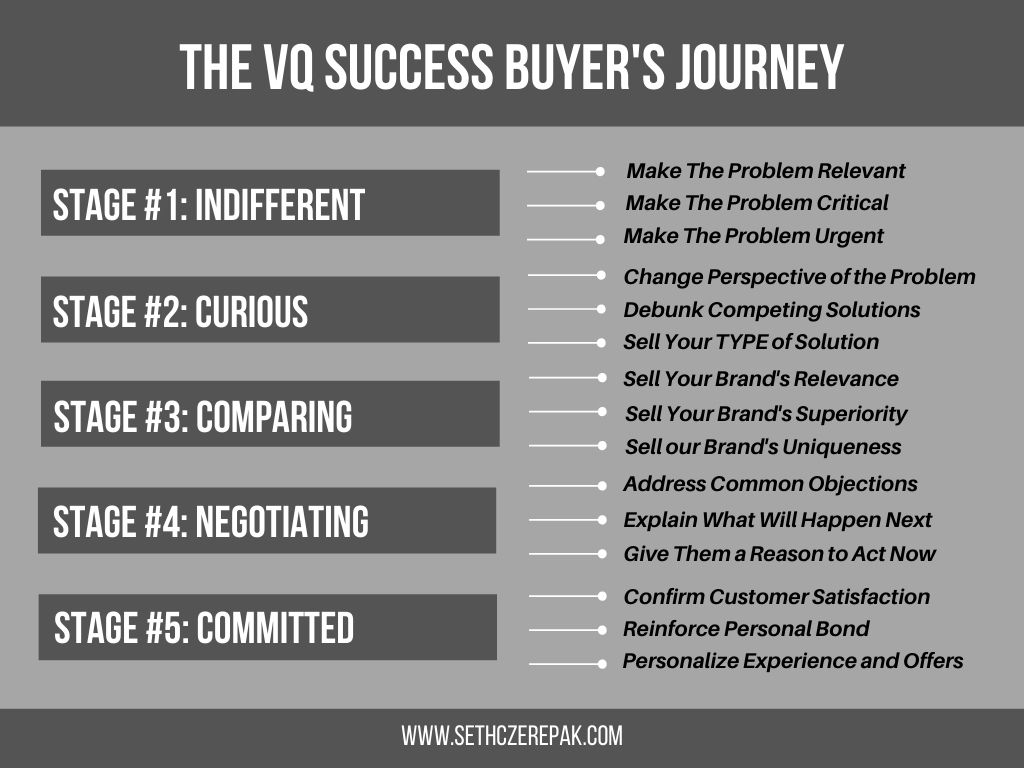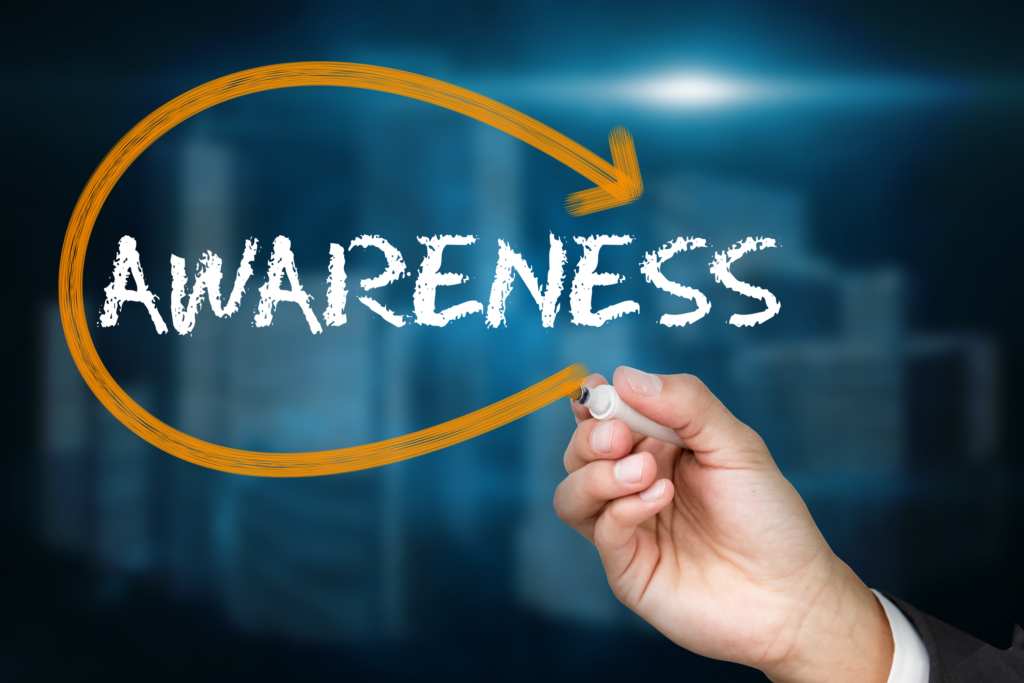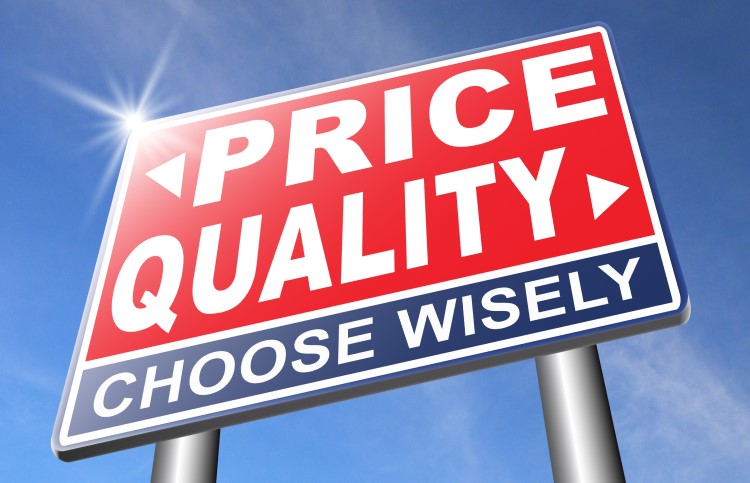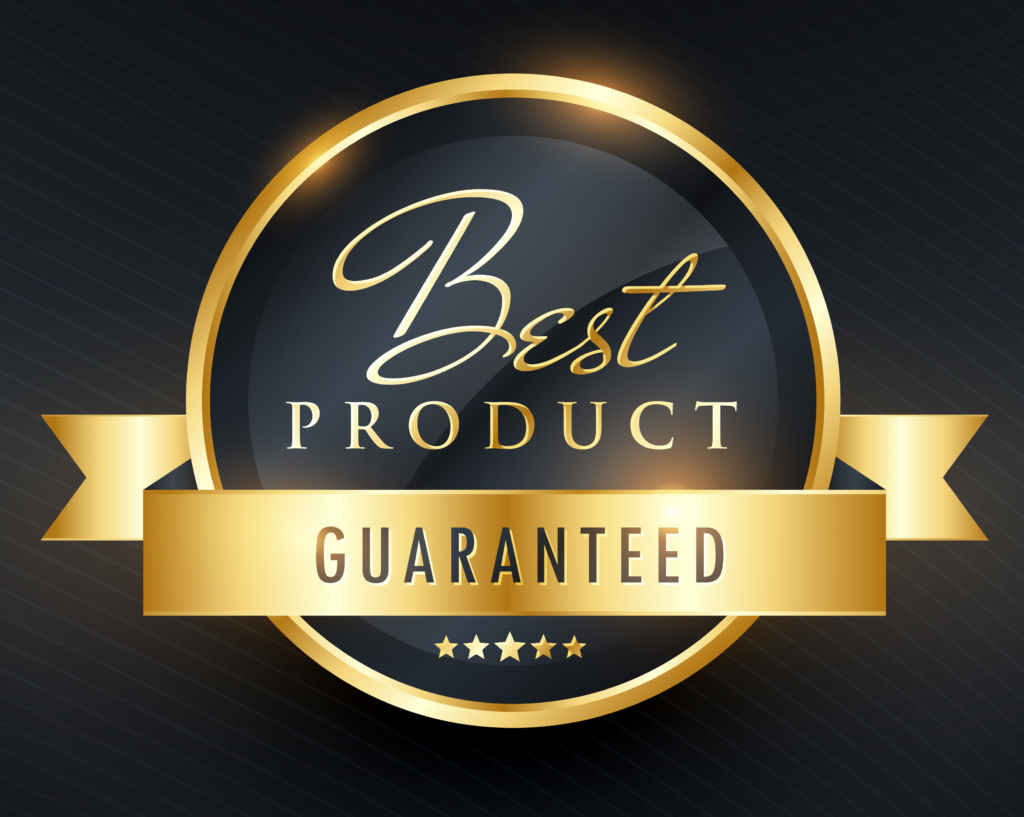Buyer’s Journey vs Customer Journey
Buyer’s Journey: the stages of awareness and interest a buyer progresses through leading up to their decision to purchase a product or service. These stages include: indifferent, curious, comparing, negotiating, committed.
Customer Journey: the stages of loyalty your customer progresses through as they become more involved in using and promoting your brand, product, or service. These stages include: buyer, loyalist, promoter, referrer, winback.
Topics Covered in This Article
Buyer’s Journey vs Customer Journey – Introduction
Welcome to our Buyer’s Journey vs Customer Journey breakdown. This is the single most important subject for any modern marketer to study. By the time you’ve read this article, you’ll know exactly what I mean.
The buyer’s journey comes into play after you’ve completed the first two steps of your content marketing strategy. The two blueprints in this article will make it easier to implement the other six steps.
More importantly, it will explode your long-term success by rewarding you with the top three Benefits of a Content Marketing Strategy. Before we start, I’d like to debunk a widespread modern myth about the origin of this idea.
(Click here if you prefer to skip my rant)
The term “buyer’s journey” was coined by the company HubSpot in what I consider a slippery attempt to take credit for an idea that wasn’t theirs. The idea (which I call “Angle Selling”) came from an old-school copywriting book Breakthrough Advertising, by Eugene Schwartz. This book is a true masterpiece that I believe EVERY serious marketer should read. I discovered this book in 2012, just three years prior to starting my freelance copywriting career.
I was pleasantly surprised to see the author talking about an idea I’d been experimenting with since the early 2000s when I first started writing sales scripts in the corporate world. Mr. Schwartz’s book exploded my understanding of the idea and helped me continue to test and refine my own version of his 5 Stage Marketing Model.
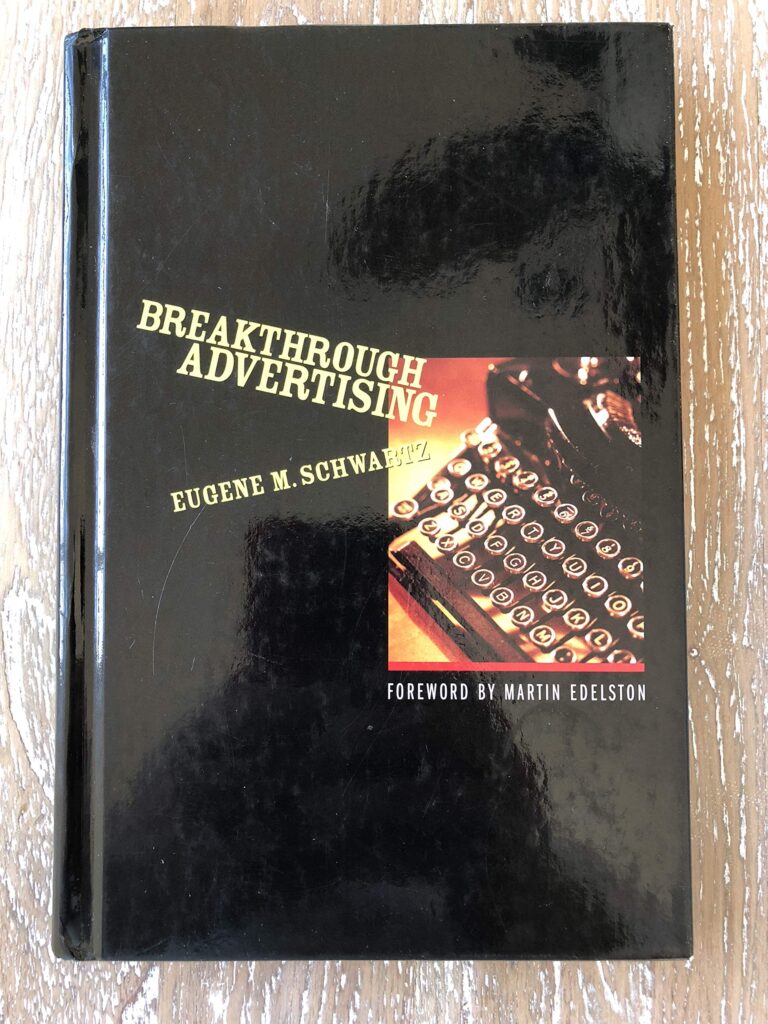
I consider Schwartz’s Model timelessly relevant and urge you to get his book and make it part of your study. HubSpot’s three-stage model is, in my opinion, a Rubber Chicken version of Schwartz’s Model and not worth learning.
Our signature model, The VQ Success Buyer’s Journey, is based on this model. I have adapted Schwartz’s ideas to make them applicable to digital content marketing. I have also integrated concepts from The Science of Formal Axiology and from Alfred Korybski’s discipline of General Semantics (a brilliant idea was also ripped off and repackaged as “NLP”).
This article introduces you to The VQ Success Buyer’s Journey and shows you how to apply it to your content marketing strategy. I believe you’ll find this 5 Stage Model more thorough, scientific, and practical for marketing to modern consumers.
We’ll start with a breakdown of the psychology behind the buyer’s journey concept. We’ll break down each stage of The VQ Success Buyer’s Journey and gives you a simple blueprint for applying them to your content marketing strategy. We‘ll then define the customer journey, breaking down each of the four stages and giving you a template for implementing it in your customer-focused content marketing strategy.
We’ll finish by summarizing both of these models, and giving you a simple plan for using them to create more interesting and compelling content in a fraction of the time.
Psychology of the Buyer’s Journey
Angle Selling: a sales and marketing approach that targets prospects using messages that are consistent with their current stage in the buyer's journey, and their psychographic profile.
It would be nice if our prospects woke up in the morning saying:
“It’s a great day to spend money! I’m going to pay top dollar for Seth Czerepak’s Marketing Course today! I know Seth’s competitor has a course that’s only a fraction of the price. But Seth’s course is worth the extra money, and much more! Now, where’s my credit card?!”
Obviously, this isn’t how people go from being strangers to being loyal customers.
Our prospects start out as complete strangers who have never heard of our specific product or service. Our job is to turn them into loyal customers, or at least into email or social media subscribers so we can convert them over time.
Most marketing campaigns try to lead people straight to one of these two outcomes, losing truckloads of valuable leads in the process. This happens because their marketing strategy isn’t aligned with the stages of awareness that a modern prospect goes through as they discover a problem, research solutions, compare brands, and make a buying decision.
We call this series of stages the buyer’s journey. When we build a marketing strategy based on these stages, I call it “Angle Selling.” To do this successfully, we need to understand the psychology behind these stages. The VQ Success Buyer’s Journey stages are based on a prospect’s knowledge, assumptions, and/or expectations about one or more of the following four things:
Let’s take two examples, one B2C example and one B2B example.
Psychology of The B2C Buyer’s Journey
For our B2C example, let’s assume you sell a natural supplement that helps active men between 40 and 55 to overcome reactionary arthritis. The stages of your buyer’s journey will be based on your prospect’s awareness (or lack of) about the following four things:
For example, your prospect might have minor pain in their joints but shrug it off as something that will eventually go away. These prospects will ignore any content attempting to educate them about why prescription or OTC drugs won’t fix their reactionary arthritis.
They aren’t looking for solutions or even researching the problem because they’re unaware of how personal, critical, and urgent the problem is. The VQ Success Model defines this as Stage #1 of the Buyer’s Journey, or the “Indifferent” stage.
You’ll also have prospects who know that they have the first signs of reactionary arthritis and who know how personal, critical, and urgent it is. These prospects are highly likely to be searching for solutions to the problem. So, they’ll be receptive to educational content about how prescription or OTC drugs will fail to fix their reactionary arthritis. The VQ Success Model defines this as Stage #2 of the Buyer’s Journey, or the “Curious” stage.
You’ll also have prospects who are aware of the risks of using prescription or OTC drugs to treat reactionary arthritis and are shopping for the best natural supplement.
These prospects won’t be interested in educational content about how serious reactionary arthritis is or why prescription or OTC drugs are an inadequate solution. They’ve already passed through those stages of awareness.
They will, however, be highly receptive to messages about why your brand is the most relevant, superior, and unique natural supplement for men their age who want to rid themselves of reactionary arthritis. The VQ Success System considers this as Stage #3 of the Buyer’s Journey, or the “Comparing” stage.
Most marketing messages (online and offline) only target prospects in this stage. This is because most marketers either don’t know about Angle Selling or are too busy to build a multi-stage strategy around it. This is why online marketing seems so competitive for most marketers. Once you break out of this crowd, you’ll be amazed at the difference it makes in your response rates and your ROI.
It’s impossible to overstate the difference this will make in your results. By defining your Buyer Persona and applying the five stages of The VQ Success Buyer’s Journey, you’ll connect with your prospects long before your competitors even have a chance.
By the time your prospects reach Stage #4 they’ll be much more likely to choose you over a competitor and to be happy about paying a higher price for what they see as a superior product or service.
Stage #4 of The VQ Success Model is the “Negotiation” stage. These prospects have decided that your product or service is the best solution for their available problem. They just haven’t bought yet.
These prospects don’t need more education or persuading and are more likely to be turned off by it. They just little more assurance to overcome their last-minute hesitations.
After this, The VQ Success Buyer’s Journey has one more stage, which we call Stage #5, or the “Committed” stage.
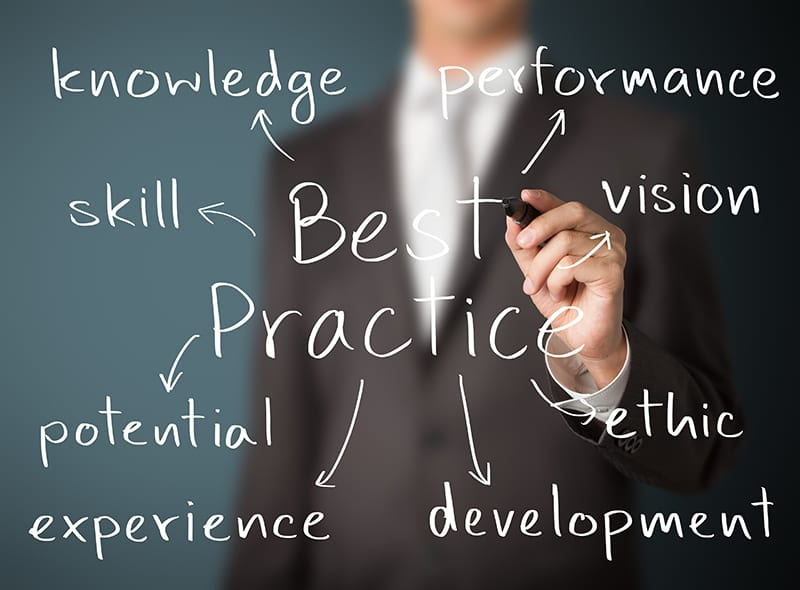
This is where the Buyer’s Journey vs Customer Journey transition happens. At this stage, your content marketing strategy should be focused on increasing the satisfaction, loyalty, and lifetime value of your customers.
Psychology of The B2B Buyer’s Journey
For our B2B example, let’s assume you’re marketing staff recruiting services to software development startups. The stages of your buyer’s journey will be based on your prospect’s knowledge, assumptions, and/or expectations about one or more of the following four things:
As with our B2C example, some prospects will have high employee turnover, but be unaware of how relevant, critical and urgent the problem is. These are Stage #1 (Indifferent) prospects. Other prospects will be aware of the problem, but exploring multiple solutions, which may or may not include recruiting services. These are Stage #2 (Curious) prospects.
We will also have prospects who are aware of the problem and who have decided that hiring a recruiting service is their best solution. Other prospects will be shopping for your TYPE of product/service or even comparing you to a list of direct competitors. These are Stage #3 (Comparing) prospects.
Finally, we will have prospects who have decided that your recruiting services are the best available solution, but who haven’t yet paid money to hire you. These are Stage #4 (Negotiating) prospects. The final stage, of course, is Stage #5, and this is when your prospect has become a client. This is where the Buyer’s Journey vs Customer Journey transition happens, which we’ll discuss later.
Summary of the VQ Success Buyer’s Journey
The following summary of The VQ Success Buyer’s Journey is based on the B2B example we just discussed:
Once you know how to communicate with your prospects during EACH of these stages, AND lead them from one to the other, you’ll have x-ray vision of how to create high-converting content marketing messages. These messages can be in the form of blogs, explainer videos, classified ads, podcasts, and much more.
Now that you’re familiar with the concept of Angle Selling, let’s unpack the Five Stages of The VQ Success Buyer’s Journey one at a time.
– Article Continues Below Infographic –
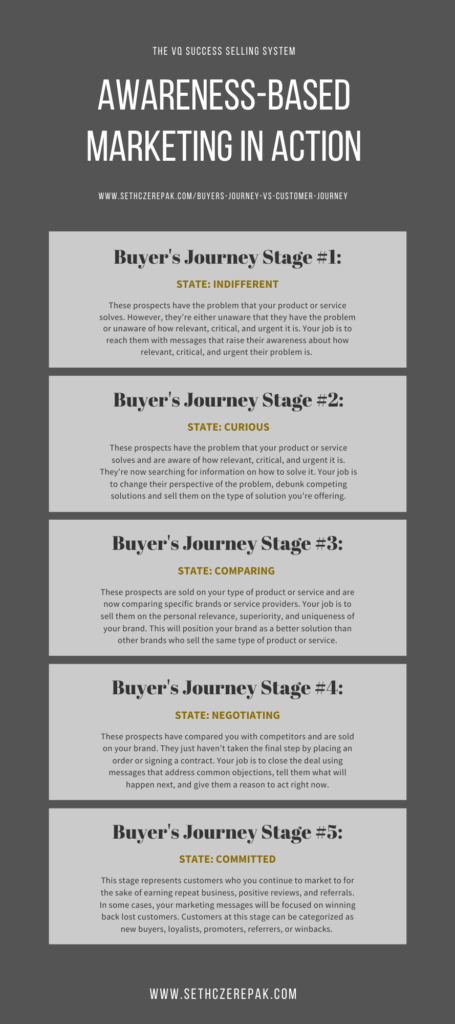
Awareness Stage #1: Indifferent
An Indifferent prospect is anyone who matches your buyer persona and who has the problem that your product or service solves. However, they aren’t actively searching for a solution, because they’re either:
This lack of awareness makes them indifferent to any messages about the problem or how to solve it.
They won’t be searching for information about the problem, and they certainly won’t care about how you compare with your competition. Your job as a content marketer is to show them how relevant, critical, and urgent their problem is. Before we unpack this idea, here are some examples of Stage #1 Prospects:
Notice that in all these examples, the prospect is either unaware that they actually have a problem or they’re unaware of how relevant, critical, and urgent the problem is. By “relevant,” I mean that they are unaware (or in denial) about how personal the problem is to them. Psychologists call this “optimism bias,” a cognitive bias that causes someone to believe they’re less likely to experience a negative event compared to other people.
For example, most smokers don’t believe they’ll get lung cancer by smoking. They may be keenly aware of how critical lung cancer is, but they don’t consider it relevant to them. If they do get it, they’re likely to react with the “I never thought this would happen to me” attitude or even with denial.
Most marketers don’t even bother with Stage #1 Prospects, which is a mistake. They’re missing the opportunity to capture the prospect’s attention at the earliest stage of the buyer’s journey. The earlier you get on your prospect’s radar, the more of a head start you’ll have on your competitors once the prospect does decide to spend money on a solution.
You do this by reaching out to them with messages that raise their awareness of three things:
If they’re aware of how critical the problem is, optimism bias could still have them thinking that the problem will “work itself out in time.”
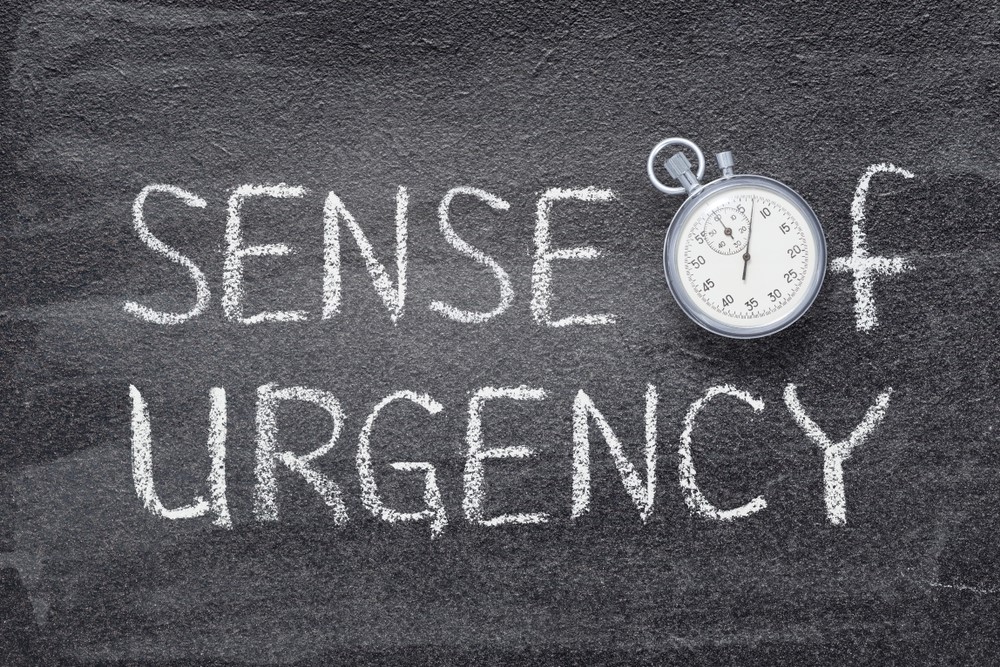
If they’re aware of how relevant the problem is to them, but don’t consider it critical, they won’t be motivated to look for a solution. If they’re aware of how relevant and critical the problem is, but don’t consider it urgent, they’ll put off dealing with it. This is why your Stage #1 marketing messages must hit all three of these hot buttons.
The details of how to do this are beyond the scope of this article, which is why I cover them in detail (including multiple examples and application strategies) in my article series, 10 Persuasive Copywriting Techniques. I also suggest you read the final section of our article on How to Create a Buyer’s Persona, which gives you a rock-solid blueprint for getting inside your prospect’s mind.
I know this seems like a lot of reading, but Angle Selling is not a topic you learn and master overnight. Like anything worth doing, it takes hard work, patience, and practice. The good news is that if you master these techniques, you will have a huge advantage over all your competitors who haven’t bothered.
How do you reach a Stage #1 Prospect if they aren’t actively looking for a solution? You have to know where they’re already finding trustworthy content on other topics related to their problem. I explain this in more detail in the final section of this article.
To summarize this section, #Stage 1 (Indifferent) Prospects have the problem that your product or service solves. They experience the symptoms (early or progressing) of this problem in their everyday life. However, they’re either unaware that they have the underlying problem, or they’re unaware of how relevant, critical, and urgent it is.
Your job is to know how they experience these symptoms and to raise their awareness of how relevant, critical, and urgent the problem is. Once you’ve achieved this, they become a Stage #2 Prospect and require a new messaging strategy.
Awareness Stage #2: Curious
A Curious prospect is anyone who matches your buyer persona, knows that they have the problem your product or service solves, and knows how relevant, critical, and urgent it is. They’ll be looking for information on either:
It’s a common mistake to assume these prospects are ready to hear about your product or service.
They may not even be looking for your TYPE of product or service. If you try to sell them on either of the above points, you’ll look like another Rubber Chicken marketer, instead of a trustworthy expert. Stage #2 Prospects will be actively searching for information and insights on how to solve their problem. Here are few examples of Stage #2 Prospects and the keywords they might be typing into search engines:
Notice that these prospects aren’t (yet) focused on a specific TYPE of product or service. If you put a “buy now for a limited time offer” or a “here’s why we’re better than our competitors” message in front of them, they’ll dismiss it as irrelevant to their search, or just another junk advertisement. Thankfully, this is the exact mistake most of your competitors will make.
Many of your competitors will also neglect these prospects for the sake of chasing the low-hanging fruit of Stage #3 Prospects. This leaves a golden opportunity for you to swoop in and start building a relationship with them before most of your competitors even have a chance.
You do this by reaching out to them with messages that will:

The order is very important here, for a few reasons. Stage #2 Prospects will have a list of misconceptions and biases (negative and positive) about their problem, the available solutions, and even the type of product or service you sell.
#1 Change Their Perspective of the Problem
Most of these misconceptions and biases will be based on their misunderstanding of the problem’s cause. By educating them about the real cause of the problem, you change their perception of the problem, and position yourself as an authority on the topic. This makes it much easier to successfully debunk the competing solutions.
Once the competing solutions are debunked, you have an open door to sell your prospect on the superiority of your TYPE of product or service. If you try to do this in any other order, you’ll be swimming against a riptide of misconceptions and biases about the problem, its competing solutions, and even about you as the content publisher. This is why most marketing campaigns fail to persuade Stage #2 Prospects or even keep their interest.
#2 Debunk The Competing Solutions
To clarify this point, let me define the term “competing solutions,” and explain what I mean by a product or service “type.” Starting with competing solutions, most problems have a list of available solutions on the market. Some even have do-it-yourself solutions.
A Competing Solution is any solution that your prospects are willing to try themselves or to pay money for. Some of these solutions will be ineffective, or even dangerous. Others may be pure marketing gimmicks, and others will be legitimate.
Regardless of how you see it, if your prospect considers a solution worth looking into, it qualifies as a competing solution. It’s a common mistake to simply ignore it because you don’t consider it illegitimate or not a threat. Your prospect decides who the competition is, not you.
#3 Sell Them on Your Type of Product or Service
Your product or service type is the general category to which your product or service belongs. For example, if you’re a marriage counselor, marriage counseling is your service type, your Stage #2 Prospect might be someone who is trying to heal their marriage after an affair.
As much as they need your services, they might not be sold on the idea of marriage counseling. They might even have negative misconceptions or biases toward the idea of counseling in even counselors in general.
If you jump right into a message about how you’re the best marriage counselor in town (or even the world) before they’re sold on the concept of marriage counseling, you’ll lose a lot of traction with a Stage #2 Prospect.
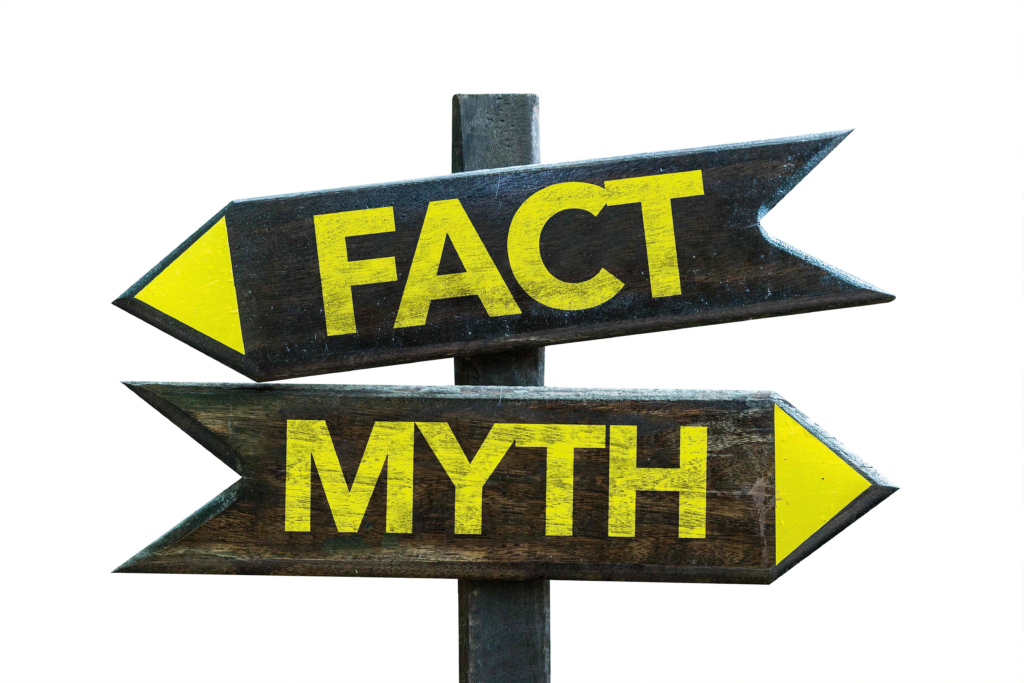
They might also be exploring books, seminars, couples retreats, sex therapy, or support groups. They will likely have a list of misconceptions and biases (positive and negative) about these solutions as well. You’ll need to clear up these misconceptions, educate your product about the disadvantages of these alternatives, and create a path to position your TYPE of product or service as the best solution.
This means boldly and honestly debunking any competing solutions as ineffective, or dangerous, or illegitimate. If a competing solution is legitimate, safe, and reasonably effective, your job is to validate its positive points, but position your product or service type as the superior solution.
As with the Stage #1 techniques, the details of how to do this are beyond the scope of this article and covered in detail (including multiple examples and application strategies) in my article series, 10 Persuasive Copywriting Techniques.
To summarize this section, Stage #2 (Curious) Prospects have the problem that your product or service solves, and they know they have it. They experience the symptoms (early or progressing) of this problem in their everyday life and they’re aware of how relevant, critical, and urgent it is. That’s why they’re searching for solutions.
Your job is to change their perception of the problem by revealing its true cause, debunk the competing solutions, and position your product or service TYPE as the best. Once you’ve achieved this, they become a Stage #3 Prospect and require a new messaging strategy.
Awareness Stage #3: Comparing
This is good because they’re closer to the end of the buyer’s journey, and can be turned more quickly into customers. This is bad because it makes them more prone to price shopping and other annoyances that I talk about in my in-depth writings on marketing to Stage #3 Prospects. It’s also bad because most marketing campaigns focus primarily on these prospects, making it much more competitive to reach and convert them.
The good news is, the more oblivious your competitors are to the Buyer’s Journey vs Customer Journey concept, the more likely they’ll be to focus all their marketing efforts on Stage #3 Prospects. You can exploit this weakness by reaching prospects while they’re still in Stage #1 or Stage #2 and building a reputation as an expert before they even start comparing you with competitors.
Here are some examples of Stage #3 Prospects:
Notice how all these prospects are sold on a specific type of product or service, and looking for the best brand or service provider. However, it’s a mistake to assume that Stage #3 Prospects are ready to buy or even to talk to a salesperson. Whether they’re consciously aware of it or not, every Stage #3 Prospect is evaluating you, and your competitors to see how you compare on three things: Relevance, Uniqueness, and Superiority.
Before we unpack these three points, let’s deal with the single most common problem people face when trying to convert to Stage #3 Prospects, price shopping.
(Click here if you prefer to skip my rant on price shoppers)
If you’re getting a lot of price shoppers, it’s easy to assume that they represent the majority of the market and that you have to cater to them if you want to stay in business. This is one of the most crippling paradigms you can have as a marketer or salesperson.
It’s especially common for people who are just starting out and who feel like they need to “build up their customer base” before they can raise their prices.
This rarely works out the way they hope, and with good reason. Lower prices mean less money to invest back into improving your product or service. It also means less money for hiring quality employees and contractors.
More importantly, it means less money for quality marketing, which creates a decline in leads and in lead quality. This combination of factors ensnares your brand in the entrepreneurial purgatory of feast or famine income cycles. It makes you highly vulnerable to economic downturns and forces you to deal with lower-quality vendors.
This is why my general attitude toward price shoppers is that you should do your best to keep them from even contacting your business. If you diligently apply the Content Marketing Strategy we reach in our articles and training course, you’ll be consistently reaching Stage #1 and Stage #2 Prospects before they become Stage #3 Prospects. By the time they do, you will have positioned your brand as an authority on the prospect’s problem, the competing solutions, and how these solutions compare to the type of solution you offer.
If you apply the Stage #3 techniques laid out in this section, your prospect will see you as the most relevant, unique, and superior option, and be happy to pay a little more for quality. If not, it’s likely that you’re dealing with someone who is more concerned with getting the lowest price than they are with getting the best quality. You might also be dealing with someone who expects to get both, which is often a sign that they’re more trouble than they’re worth.
One of the most exciting Benefits of Content Marketing is its ability to consistently attract higher-quality prospects. Higher quality prospects know the difference between your solution and the competing solutions. They also know that the differences between you and your competitor go beyond price and that it’s worth it to pay more for a superior product or service.
Now that I’m done with my rant on price shoppers, let’s unpack the three selling points for Stage #3 Prospects.
#1 The RELEVANCE of Your Brand
The prospect is essentially asking how well-suited your product or service is for a person like them. For example, our article on How to Create a Buyer Persona teaches you to define a B2C audience according to their generation, social status, gender group, education level, and lifestyle. These B2C buyer persona traits help you target and attract customers who have these traits in common.
If your incoming prospects see that your product or service has worked for people with whom they share similar buyer persona traits, they’ll see your solution as a more relevant fit for people like them. The same principle applies to B2B prospects, but the question will look more like this:
“Is this the best solution for a company like ours?”
The words “a company like ours” are the key to understanding this question. Again, the prospect is asking how well suited your product or service is for a business like theirs. Our article on How to Create a Buyer Persona teaches you to define a B2B audience according to their industry, business model, company size, financials, decision-maker, buying process and even the buyer person traits of the decision-maker.
These B2B buyer persona traits help you target and attract businesses and decision-makers who share these traits in common. Just as with your B2C prospects, if your incoming prospects see that your product or service has worked for businesses who share similar buyer persona traits, they’ll see your solution as a more relevant fit for their business.
Stage #3 Prospects also want to know how relevant your solution is to their experience of the problem. Here are a few examples of what I mean:
Bottom line, modern consumers are so accustomed to personalized and customized products and services, they’ve come to expect them. When given a choice between a specialized or a one-size-fits-all solution, the specialized option will always appear more valuable.
#2 The SUPERIORITY of Your Brand
Superiority addresses the second question Stage #3 Prospects use to evaluate your product or service:
“How do I know this will work?”
This prospect is essentially asking how effective your product or service will be for solving their problem. More importantly, they want to know whether your solution will work better than your competitors’.
When I was managing sales teams back in the corporate world, I tested dozens of sales pitch variations to find out how prospects answer this question. I have also experimented with thousands of messaging strategies across dozens of industries while working as a freelance copywriter. Without a doubt, a prospect’s answer to this question boils down to four factors (listed from most important to least).
If your Stage #3 marketing content nails all four of these points, you’ve said enough to settle this question. Prospects who remain uneasy about whether your solution will work are most likely concerned about something else altogether. We’ll talk about how to deal with this when we get to the section on Stage #4 Prospects.
If your brand is new and you have little or no results, experience, reviews, or endorsements to brag about yet, focus your Stage #3 messages on the other two selling points, relevance, and uniqueness. We’ll talk about how to solve his problem when we get to the Buyer’s Journey vs Customer Journey comparison later in this article.
#3 The UNIQUENESS of Your Brand
Uniqueness addresses the third question Stage #3 Prospects use to evaluate your product or service:
“Can I get the same thing somewhere else?”
This is based on one of the most misunderstood concepts in marketing, your unique selling proposition.
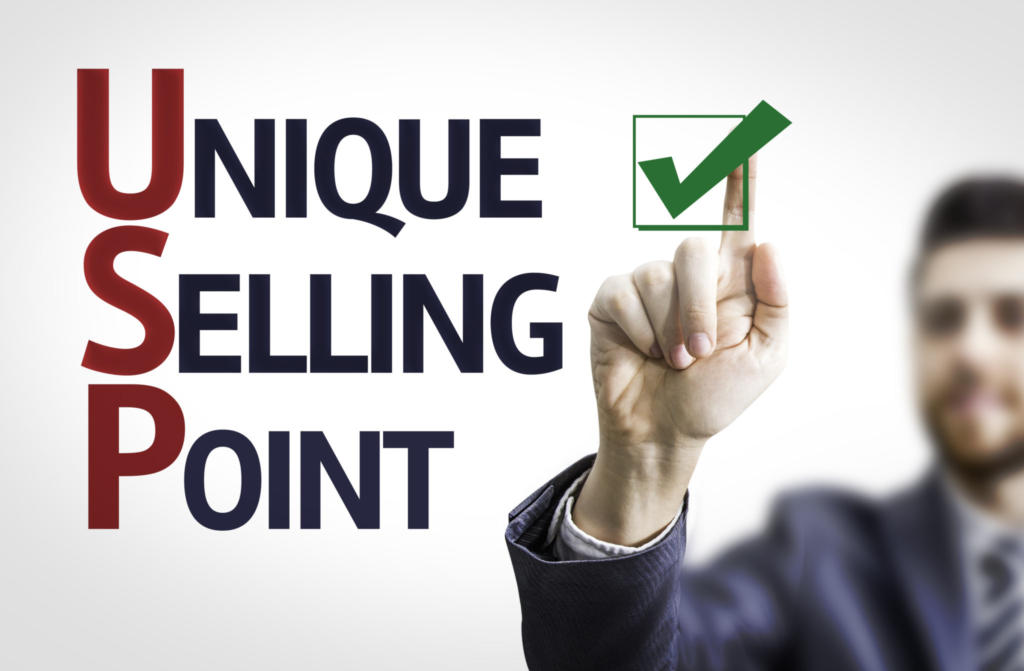
Unique Selling Proposition: (USP) the one thing that makes your brand, product, or service uniquely superior your competitors.
What makes your brand, product, or service uniquely superior to your competitor? Before you answer, here’s a list of the worst (and sadly, the most common) responses to this question:
These are not Unique Selling Propositions. They’re vague marketing cliches that any of your competitors can use to promote themselves. Sure, maybe you can back up your claim better. So what? Your prospect doesn’t know that. They can’t. They haven’t even used your product or service yet, and their perception is what matters. Your USP should never require a prospect to know something that only you and your customers can know.
Your Unique Selling Proposition needs to show your prospect that they can’t get the same thing from your competitor. They need to know that if they don’t do business with you, they will miss out on the one thing that they can only get from using your solution. Your USP clarifies what this one unique thing is, why how it will benefit your prospect when they become a customer.
Here are three rules for creating your Unique Selling Proposition:
Here’s a simple example of a USP that does all three of the above:
“Our patented Nanotech formula gives you three times faster absorption, relieving foot pain in 30 to 90 seconds.”
Notice that this USP makes SPECIFIC claims by saying “three times faster absorption,” and “30 to 90 seconds.” It also promises a BENEFIT (relieving foot pain) and ties it to a specific delivery time (30 to 90 seconds). The claim “patented Nanotech formula” also assures the prospect that they’re getting a UNIQUE product that our competitors can’t legally duplicate.
Of course, you need to make sure you can back up your claims, which is why you should avoid abstractions. In my experience, abstract words and statements are just a way of making promises that you can’t be objectively held accountable to. Specific claims, however, are less open for interpretation. They must be backed up with evidence (customer reviews, certifications, clinical studies, etc.).
If your USP makes a specific and unique promise to your prospect, and if you can back it up, you’ll have a formidable advantage over all your competitors who have a non-existent, or poorly conceived, USP. We unpack this topic in more detail (including multiple examples and application strategies) in my article series, 10 Persuasive Copywriting Techniques.
To summarize this section, Stage #3 (Comparing) Prospects have the problem that your product or service solves, and they know they have it. They experience the symptoms (early or progressing) of this problem in their everyday life and they’re aware of how relevant, critical, and urgent it is. They’re also sold on your product or service type, and are now looking for the best provider.
Your job is to sell them on the Relevance, Superiority, and Uniqueness of your solution. Once you’ve achieved this, they become a Stage #4 Prospect, and require a new messaging strategy.
Awareness Stage #4: Negotiating
This stage of The VQ Success Buyer’s Journey is based on one of my universal rules of sales and marketing:
“The sale isn’t made until the bill is paid.”
Negotiating Prospects have compared you with competitors and are sold on your product or service. They just haven’t taken the final step by placing an order or signing a contract.
Here are some examples of Stage #4 Prospects:
Notice that all of these prospects have settled on a specific product or service provider. They just haven’t made a formal commitment yet. Anyone with sales experience knows that the longer a prospect remains in this stage, the less likely they are to make this commitment. A Stage #4 Prospect can also change their mind last minute and go to your competitor.
Your job is to close the deal as soon as possible, using messages that:
If you do these right, your Stage #4 messages won’t even look like marketing. Let’s unpack these three points one at a time and see why.
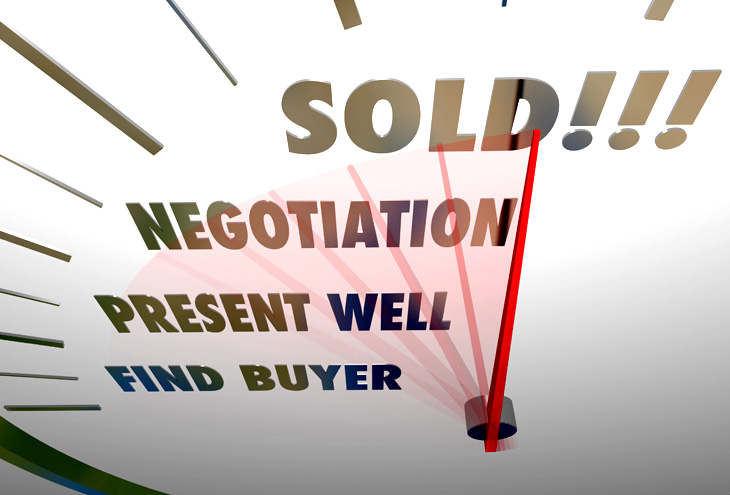
#1 Address Common Objections
A Stage #4 Prospect can only have one (or both) of the following types of objections:
All other objections are a sign that your prospect doesn’t belong in Stage #4 yet. For example, if your prospect is simply procrastinating, they need to be sold on how critical or urgent their problem is (Stage #1). If your prospect has objections about how effective your type of product or service is, they belong in Stage #2.
If they have objections about your prices or the general effectiveness of your product or service, they belong in Stage #3. Here are some B2C and B2C examples of the two types of Stage #4 objections:
Type #1: Unrelated to Your Product or Service
These objections are based on your prospect’s belief that something in their life will keep your project or service from working for them. Of course, every prospect is different and there’s no way you can anticipate every possible situation. However, every product or service has a handful of common presales questions or concerns.
Now, let’s look at our B2B example. Assume you’re a recruiter selling B2B recruiting services. Here are a few examples of possible objections, and how you would handle them in your marketing messages.
*You are reading the VQ Success Buyer’s Journey vs Customer Journey article.
Type #2: Related to Your Product or Service
These objections are based on your prospect’s worry that using your product or service might come with other hassles that they’d rather not deal with right now. Many times, these objections are based on bad experiences your prospect has had with other products or services. These objections may even be based on irrational fears, but they are still important to address in your Stage #4 messages.
For our B2C example, let’s assume you’re selling a detox and diet program to people who want to lose weight. Here are a few examples of possible objections, and how you would handle them in your marketing messages.
Now, let’s look at our B2B example. Assume you’re a content marketing agency selling managed content marketing services. Here are a few examples of possible objections, and how you would handle them in your marketing messages.
*You are reading the VQ Success Buyer’s Journey vs Customer Journey article.
#2 Tell Them What Will Happen Next
This is where you tell your prospect exactly what will happen when they buy your product, sign your contract, or make the first deposit for your services. This serves two purposes.
Firstly, it dissolves your prospects fear of uncertainty by telling your prospect when and how their product or service will be delivered. Your prospect is more likely to buy now if they have some certainty about what to expect next, and when to expect it.
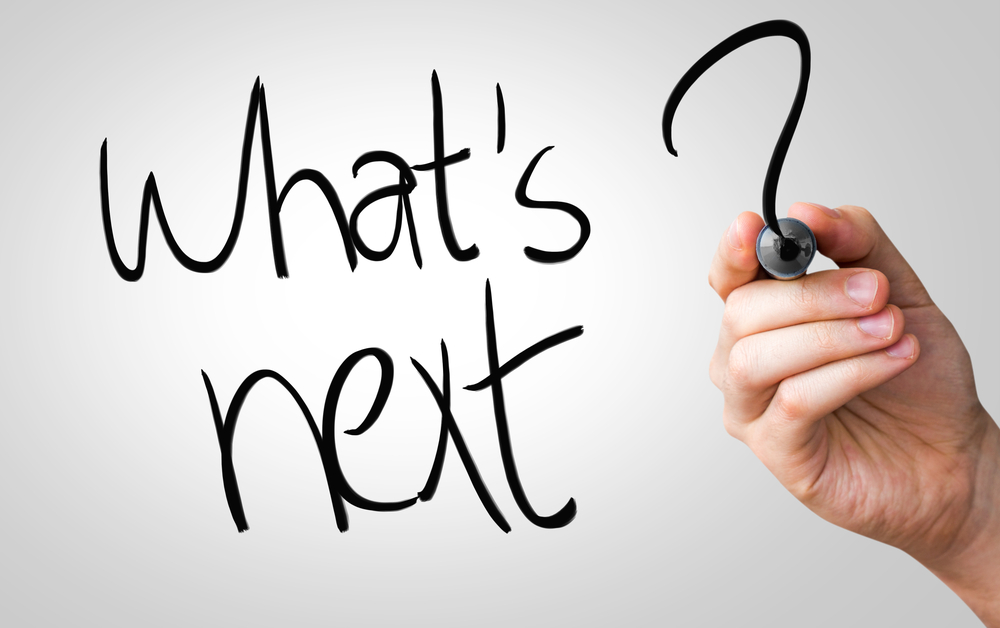
The more money you’re asking for, the truer this becomes. The clearer you are about what will happen next, the less uncertainty and hesitancy your prospect will have about getting started. For example, let’s assume you’re a B2B content marketer selling ad placement services. Here’s an example of a message you’d use to tell your prospect what’s coming next:
Once we’ve received your deposit, our research team will contact you within one business day to start your first ad campaign.
You can use this message anywhere that you explain your sign-up process. You can also include it in your email when you send them a PDF version of your contract, or even as part of the description on your first invoice. The point is to give them a quantifiable assurance of what will happen next.
For example, the above message tells them that your research team will contact them within “one business day.” This sets a clear expectation and eliminates a lot of the uncertainty that comes with signing a contract or paying a deposit. You can do the same thing when selling a product.
For example, let’s assume you’re a B2C content marketer selling home made soaps online. Here’s an example of a message you’d use to tell your prospect what’s coming next:
Once your order is complete, we’ll email you a tracking number and update you when your order is shipped, along with an estimated delivery time.
You can use this message on your shopping cart page, your checkout page, and a slightly different version on your thank you page. This is how you reduce any last minute uncertainty and hesitancy your prospect might have about getting started.
The second thing this step does is to reduce premature service cancellations and refund requests by disclosing any additional actions, costs, or delays your customer can expect. In my experience, a lot of marketers and salespeople are afraid to disclose these details because they think it will stop their prospect from buying.
This is an irrational belief that leads to high refund and cancellation rates. Ironically, it’s also the cause of about half of all abandoned purchases online. Cart abandonment statistics tell us that about seventy-five to eighty percent of online shopping carts are abandoned before a purchase is made.
The two leading causes of this are: unexpected shipping costs (accounting for 25% of abandoned carts), and having to create a new user account (accounting for 22% of abandoned carts).
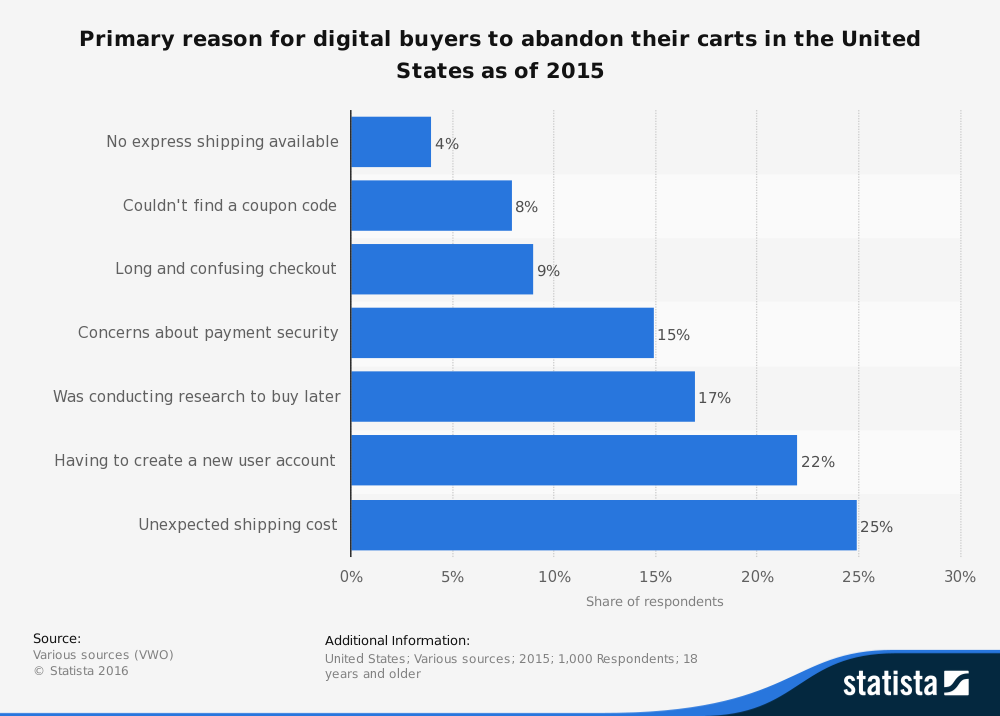
These statistics prove that failing to disclose what will happen next is far more costly than disclosing it. The fear that disclosing these details will cost sales is irrational and contrary to the above statistics. This is true both online and offline and in B2B and B2C selling situations alike.
I saw this statistic play out when I managed sales teams in the corporate world. Sales reps with the highest cancellation rates and no-show rates were the least consistent in disclosing the “fine print” to the customer. This is why your Stage #4 content marketing message should tell your prospect exactly what will happen next.
Before we wrap up this point, let me say something about people abandoning their shopping cart because they were forced to create a new account. Instead of forcing your prospects to do this before they purchase, invite them to do it afterward. Give them an incentive, like a coupon, for doing so, but make sure they have a choice to opt out. This way, if they don’t want to set up an account, you can still earn their business and collect an email for future followups.
#3 Give Them a Reason to Act Now
There’s a smart way to do this, and there’s a dumb way to do it. The dumb way is to use Rubber Chicken urgency tactics like expiring discounts, or phony claims about having only a limited supply of your product.
A good example of this is those webinar invitations with the laughable claim about a “limited number of seats.” Another example is those long sales pages that claim to have a “limited supply” of an eBook or other downloadable product.
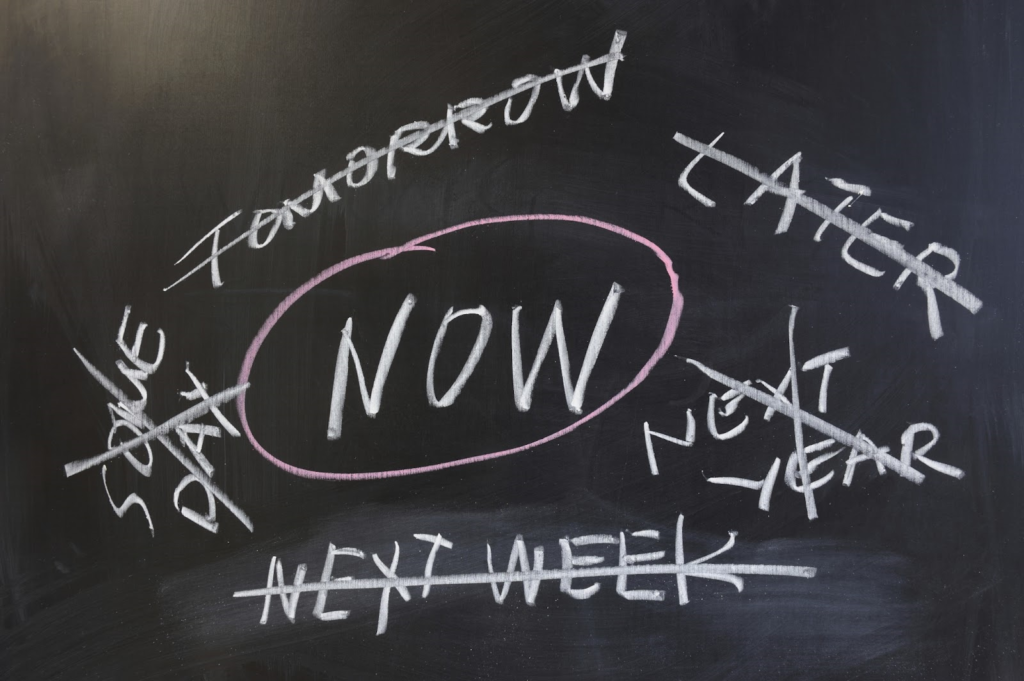
These phony appeals to urgency only work on low-quality prospects. Low-quality prospects are more likely to complain about trivial things, demand refunds (sometimes without returning the product), or to leave nasty reviews online. They are also likely to treat your “discounted” as your real price. In my experience, there are two methods for creating urgency without looking like a snake oil salesman:
Method #1: Use Waiting Lists for Services
If you have a good service, you will inevitably end up with a waiting list. In fact, I’ve advised many service providers to keep a limited staff on hand to ensure they have a waiting list for new clients.
If your prospect sees that you have a waiting list, they’ll be less likely to procrastinate when an opening finally becomes available. Of course, I advise you to use this method responsibly. Don’t claim to have a waiting list if you don’t have one. It might take you a while to get to this point, but it’s better to do it honestly than to try and fake it till you make it.
Once you have a waiting list, I suggest collecting a deposit from your prospect in order to secure their slot. Give them a limited time to pay the deposit and make it clear that if this time runs out, you’ll need to move them to the end of your waiting list so you can give the next person a chance.
Create a simple message stating this, and use it everywhere that you explain your sign-up process. You can also include it in your email when you send them a PDF version of your contract, or even as part of the description on your first invoice. The point is to give them a legitimate reason not to procrastinate.
Method #2: Checkout Bonuses for Products
A checkout bonus is any item that you add to your product checkout page. The prospect only gets the bonus item if they check out before leaving the page. If they leave the checkout page without buying, they lose the bonus.
I suggest making this an extra item (like a product, upgrade, add on, or product sample) as opposed to a coupon or discount. Discounts will only cheapen the perceived value of your product and create the expectation that the discounted price is the real price.
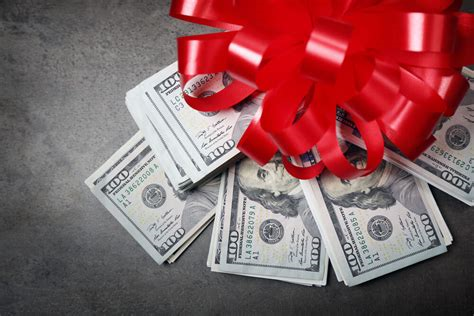
Bonuses, however, increase the perceived value of your prospect’s purchase. You can also use bonuses to introduce your customer to products which were not included in their original order.
To summarize this section, Stage #4 (Negotiating) Prospects have the problem that your product or service solves, and they know they have it. They experience the symptoms (early or progressing) of this problem in their every day life and they’re aware of how relevant, critical, and urgent it is. They’re also sold on your product or service type, and have decided to buy from you.
Your job is to address common objections, tell them EXACTLY what will happen next, and give them a reason to act now. You’ll find more strategies on (including multiple examples and application strategies) in my article series, 10 Persuasive Copywriting Techniques. Once you’ve achieved this, they become a Stage #5 Prospect, and this is where we transition from the Buyer’s Journey to the Customer Journey.
Customer Journey: the stages of loyalty your customer progresses through as they become more involved in using and promoting your brand, product, or service. These stages include: buyer, loyalist, promoter, referrer, winback.
Awareness Stage #5: Committed
The second, and more important Buyer’s Journey vs Customer Journey distinction is that the stages of the Customer Journey don’t always follow a straight line. They also depend on whether you’re marketing a product, a service, or a subscription-based service. Below is a description of each of the five stages of the Customer Journey, including their corresponding goals and strategies:
Buyer’s Journey vs Customer Journey: Stages
Customer Journey Stage #1: Buyer
Customer Journey Stage #1: Buyer
Description: a brand new customer who has recently bought your product or service.
*You are reading the VQ Success Buyer’s Journey vs Customer Journey article.
Customer Journey Stage #2: Loyalist
Customer Journey Stage #2: Loyalist
Description: a customer who buys and uses your product or service on a regular basis.
*You are reading the VQ Success Buyer’s Journey vs Customer Journey article.
Customer Journey Stage #3: Promoter
Customer Journey Stage #3: Promoter
Description: a loyalist who has also written a positive review about your business.
*You are reading the VQ Success Buyer’s Journey vs Customer Journey article.
Customer Journey Stage #4: Referrer
Customer Journey Stage #4: Referrer
Description: a loyalist who referred other paying customers to your business.
*You are reading the VQ Success Buyer’s Journey vs Customer Journey article.
Customer Journey Stage #5: Winback
Customer Journey Stage #5: Winback
Description: a loyalist who has recently stopped using your product or service.
*You are reading the VQ Success Buyer’s Journey vs Customer Journey article.
This summarizes our Buyer’s Journey vs Customer Journey breakdown. This article gives you all the tools you’ll need for successfully implementing steps three, four, and five of your Content Marketing Strategy. Customer Journey marketing is its own topic which we’ll cover in detail in other articles and tutorials.
Buyer’s Journey vs Customer Journey – Final Thoughts
We hope you enjoyed this Buyer’s Journey vs Customer Journey article. The strategies in this article will help tremendously in creating and implementing your content distribution and content creation plan.
This is the single most important subject for any modern marketer to study. This is why I’ve created copywriting articles and other supplementary materials on the topic. However, the best learning on this subject will happen as you start using these strategies in your content marketing and testing your prospects’ responses.
For example in our content distribution strategy article, we discuss three types of channels:
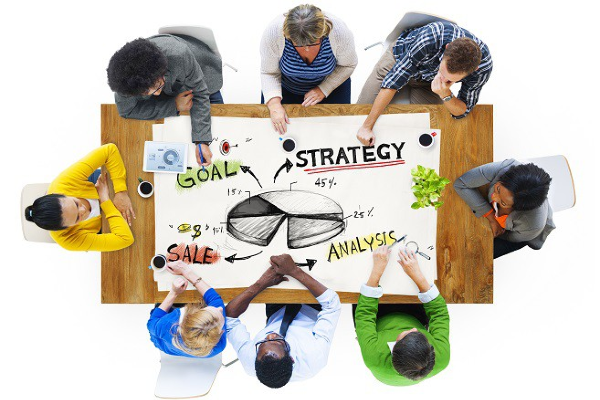
Each of these channel types will require its own messaging strategy. Ideally, you want to reach most of your Stage #4 Prospects and ALL of your Stage #5 prospects through owned channels. You might find that your earned content distribution channels are better for reaching Stage #1 and Stage #2 Prospects, while paid channels are best for reaching Stage #3 Prospects.
Don’t assume that if a Stage #1 message doesn’t work in one distribution channel that it won’t work in others. Test your messages in multiple channels and let your prospects’ responses tell you which approach is best for each of your distribution channels. This will take time and diligence, but in time you will gain a wealth of insight into how to reach your prospects and become a thought leader in your industry.
This concludes our Buyer’s Journey vs Customer Journey article.
-Best
